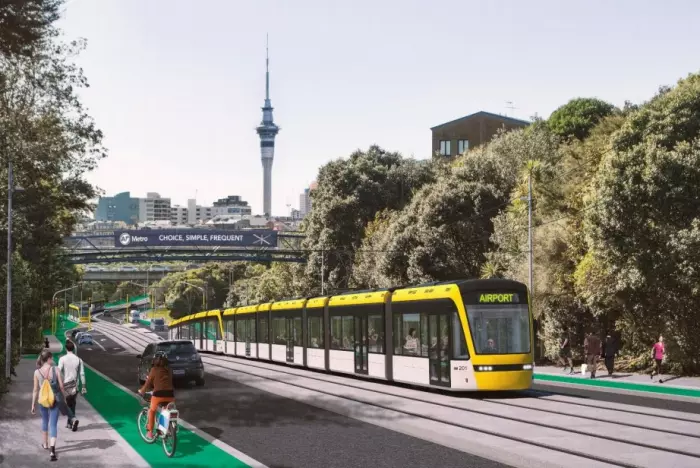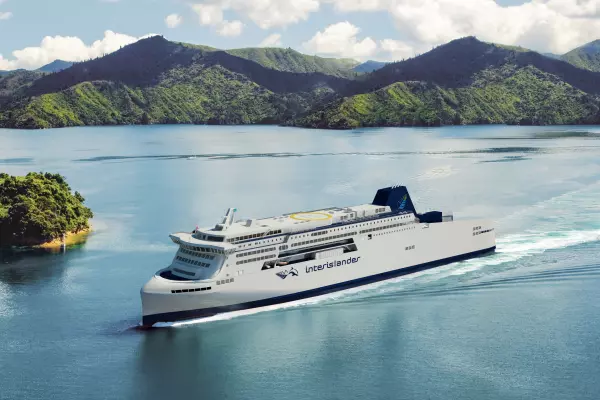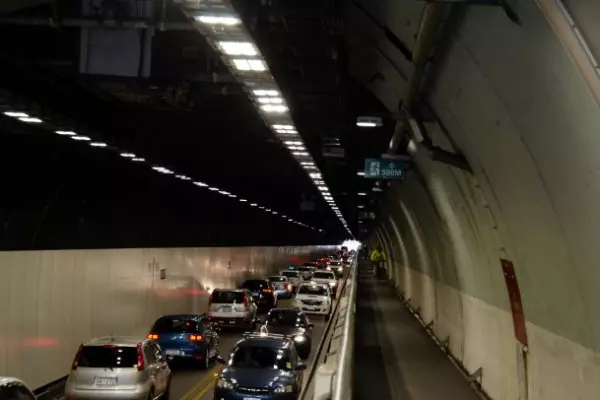In November last year the Auditor-General raised questions about the procurement process for light rail in Auckland.
But a more fundamental question is whether light rail is worth having at all.
Light rail typically consists of articulated tramcars operating within cities on streets, rights-of-way or overhead structures. The vehicles and the infrastructure are normally lighter than traditional “heavy” rail.
In Auckland the idea was developed by Auckland Transport and later picked up by Labour for its 2017 manifesto. It was for a link from the central business district up Queen St and Dominion Rd to Mount Roskill, and was later seen as being extended to the airport.
A raft of consulting reports was commissioned by Auckland Transport to support the idea, but there was no robust public debate about value for money compared with the alternatives. The previous minister of transport pursued the idea enthusiastically but the processes became messy and, last year, NZ First put an end to it for the rest of that term of government.
The government now seems to be stuck with something that has become problematic, but as no contract has been let it could still switch to something better.
Reasons for and against
Some of the reasons given for light rail in Auckland are:
- bus capacity on that route is becoming inadequate, there is bus congestion at the city end (Symonds St), and buses need more terminal space for turning around (trams do not need to turn around)
- a light rail line would encourage urban redevelopment because it appears more permanent than a bus route
- electric light rail is quiet and non-polluting and thus has greater amenity value than buses, both for travel and for surrounding activity (e.g. houses and cafes). It also has lower greenhouse emissions.
Negatives with it are:
- it is more expensive. Both the infrastructure (tracks and power supply) and the vehicles are more costly than modern buses
- it is inflexible to build. Trams can only go as far as the tracks do. The alternative of modern buses can go along a bus lane and then move onto an ordinary road. Special busways can be built at the busy city end and extended when money becomes available (as with the successful Northern Busway to Albany). With trams, it is necessary to build the whole thing before it can start operating (unless passengers are made to switch, which reduces patronage).
- it is disruptive to build. Queen St and Dominion Rd would have to be dug up and many of the utility pipes moved. Sydney’s light rail experience, and the Auckland City Rail Link underground train experience, point to extended disruption to businesses and to other traffic
- it is inflexible to operate. Trams cannot deviate from their route to avoid crashes, burst water mains, processions etc; buses can. Trams cannot branch off the main route towards different suburbs unless extra track is built, whereas buses can just use the existing roads.
Some of the problems that light rail is meant to solve are mythical. There is not much difference in capacity between articulated trams and articulated buses. Buses can overtake each other, effectively raising route capacity, whereas trams cannot. There will be little difference in amenity, pollution or emissions if the new buses are electric, which is increasingly the case. The permanence argument is not credible — there has always been public transport along Dominion Rd.
Empty land next to the ferry terminal and opposite Britomart station would be ideal for a bus terminal and turnaround area (it is much bigger than the effective bus terminal near Wellington station). An alternative is to use the lower levels in a large commercial building.
A better alternative
An advanced bus system would provide a better service. It would consist of:
- busways (slightly wider than normal bus lanes, allowing a faster smoother ride) which could be built incrementally from the CBD as funding becomes available. Light rail could later be installed where the busways are, if it was wanted
- modern articulated electric buses, plus some modern double-decker electric buses for express services
- heavy use of “big data” IT and traffic light sequencing to allow simultaneous management of buses (to help keep services regular, minimise bunching, improve connections and increase average speeds) and of road traffic, and accurate real-time passenger information.
It could be installed more quickly than light rail, with less disruption to adjoining properties and businesses, and for a lower cost. The amount of money needed upfront would be much lower as it could be built incrementally. Some of the money saved could be used to improve public transport in other parts of Auckland that have lower incomes than in this particular corridor.
Judging from Sydney's experience, a modern bus system would be faster than light rail. There a 26-minute bus ride was replaced by a 45-minute light rail ride, with consequent poor patronage. Light rail in Sydney also had major construction disputes, cost overruns and delays.
Light rail is not suitable for an airport service
The idea of extending to the airport was added hastily during the 2017 election period. Experience in Portland, Oregon shows it to be the wrong choice of mode — it is too slow. The overseas norm for airport transport is buses or heavy rail.
Later, after the airport aspect was criticised, it was suggested the service would be more for the airport business park and/or for Mangere, but light rail would not suit such dispersed origins and destinations.
As there is no contractual commitment to light rail the new minister can avoid the fate of his predecessor by taking the opportunity to replace light rail with something that is both better: faster, in-service sooner, more flexible and resilient, easier to pay for and less risky.
It would take some political bravery to change an old promise, but doing so would reduce political delivery risks in, say, three years’ time.
David Greig is a policy economist who has worked in the NZ Treasury and Ministry of Transport, the Victorian Treasury, the OECD, and the Australian Productivity Commission and consulting firm ACIL














